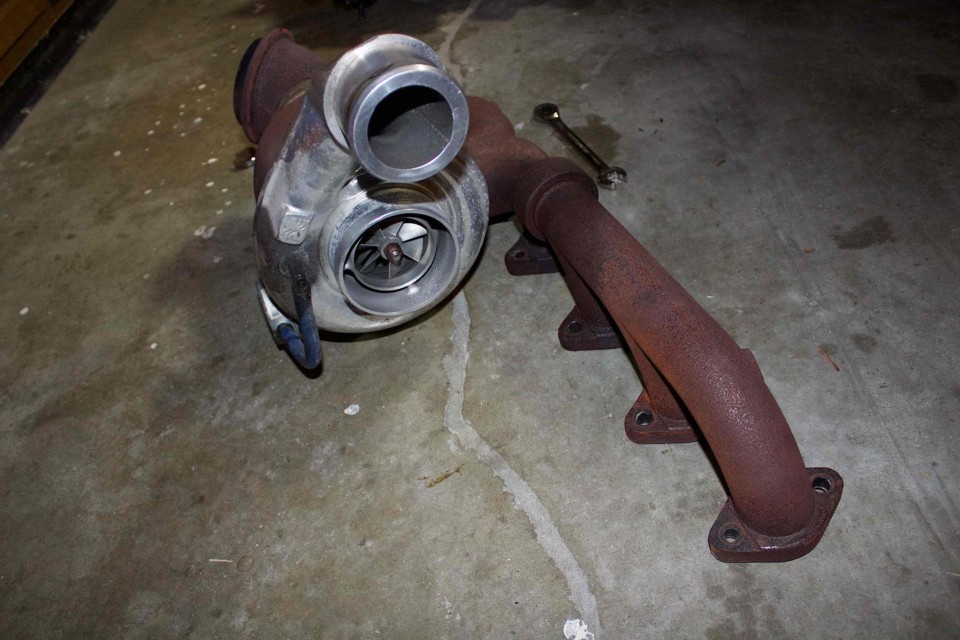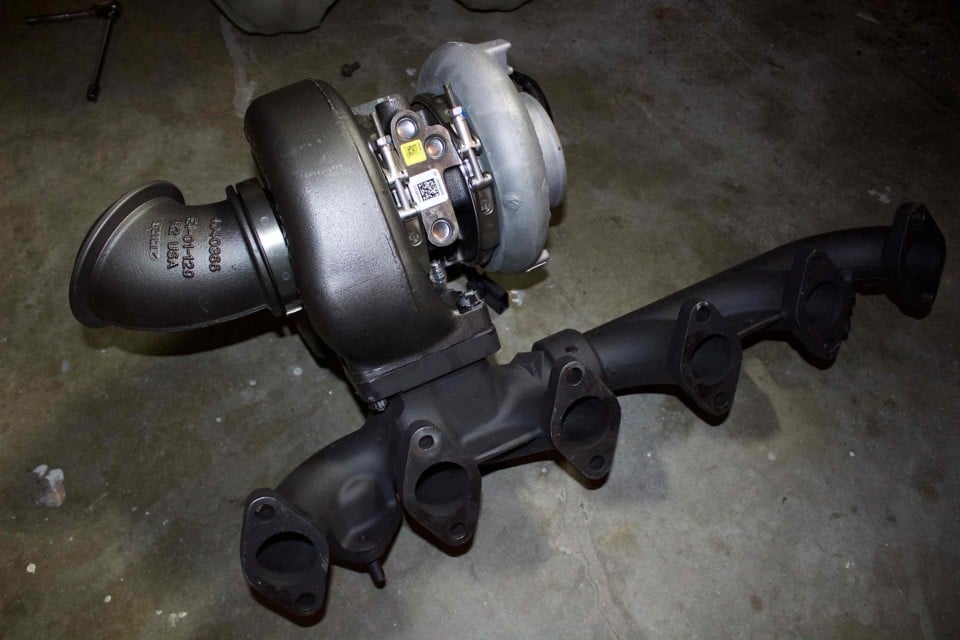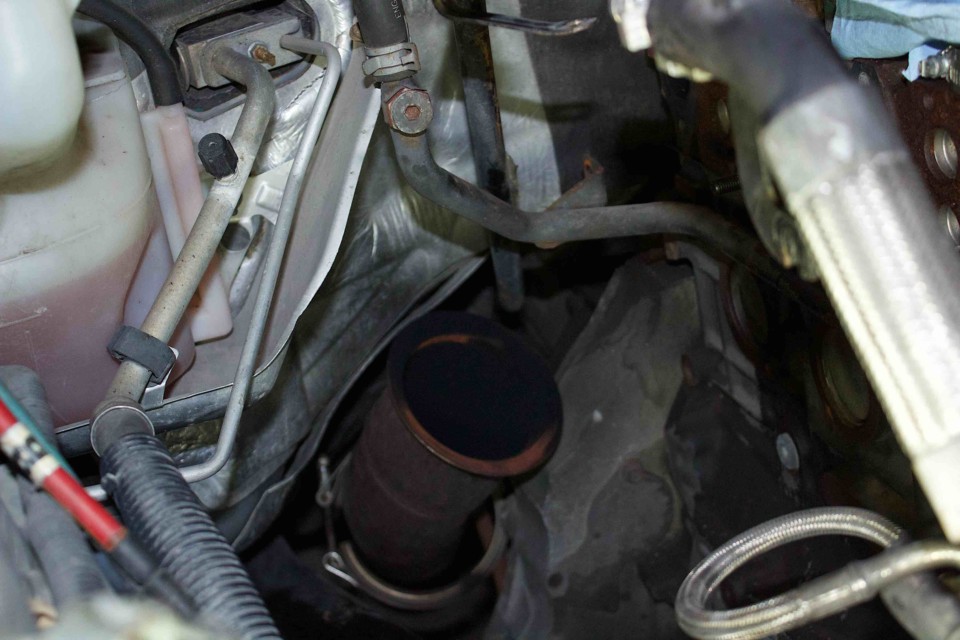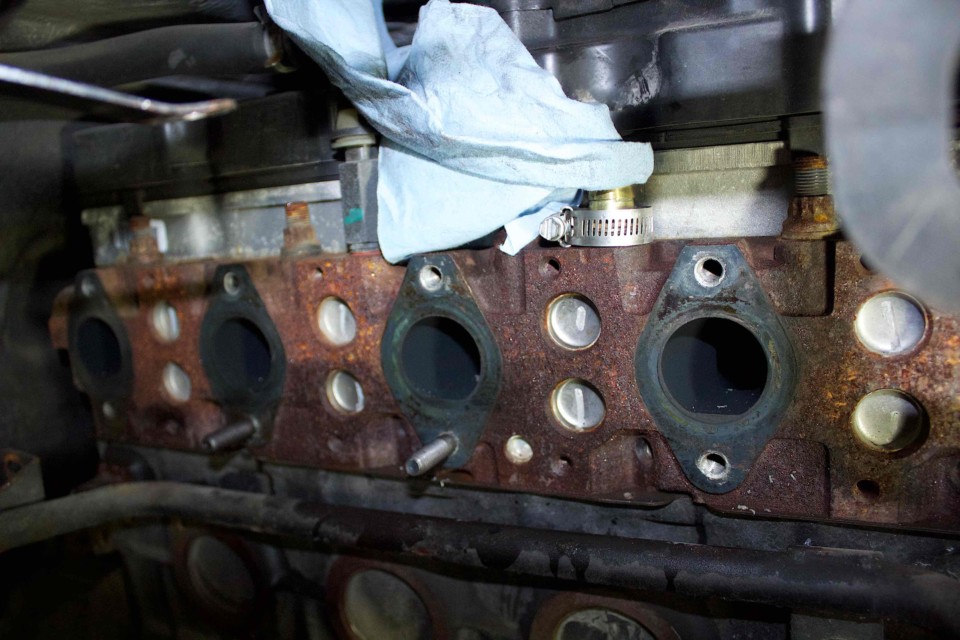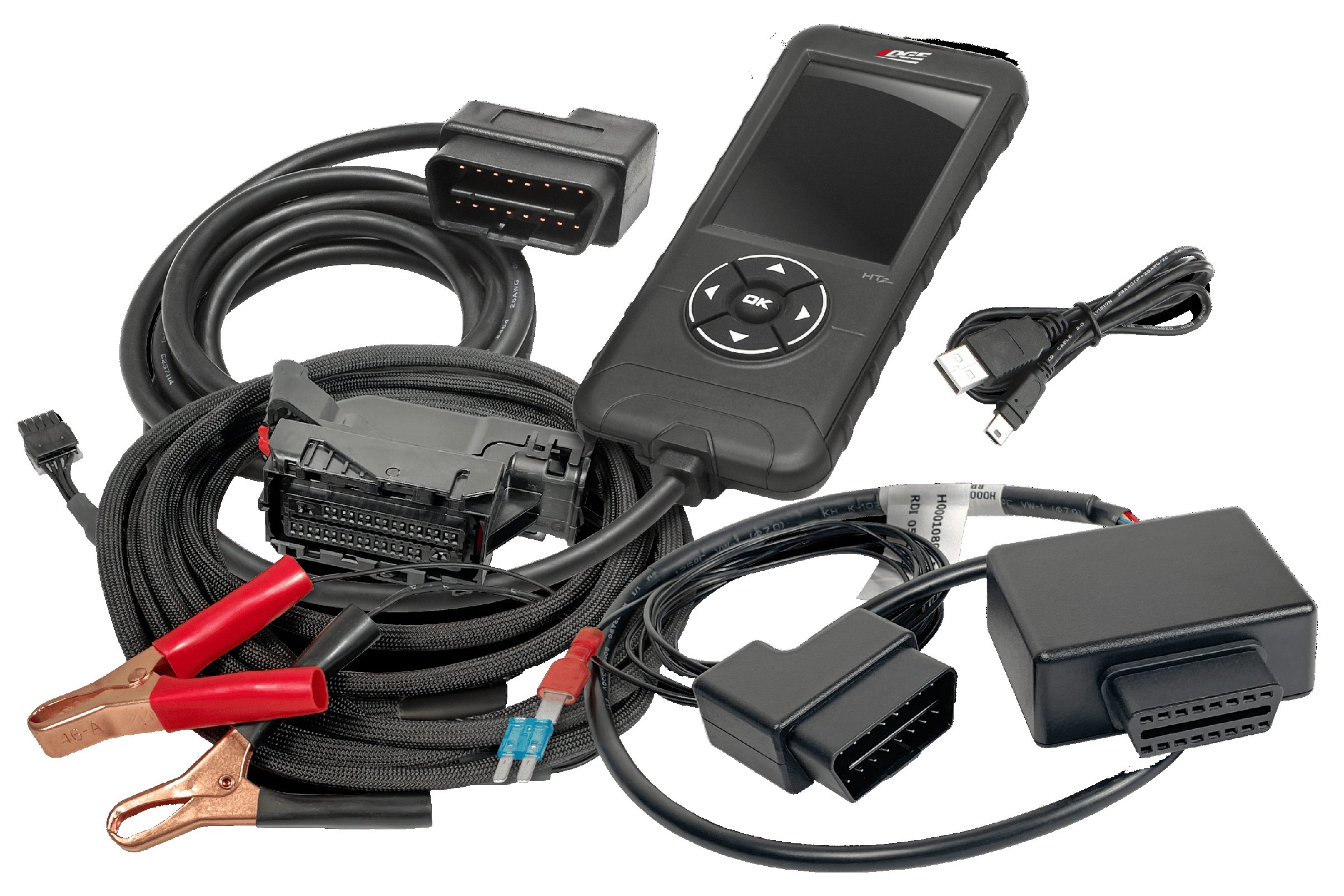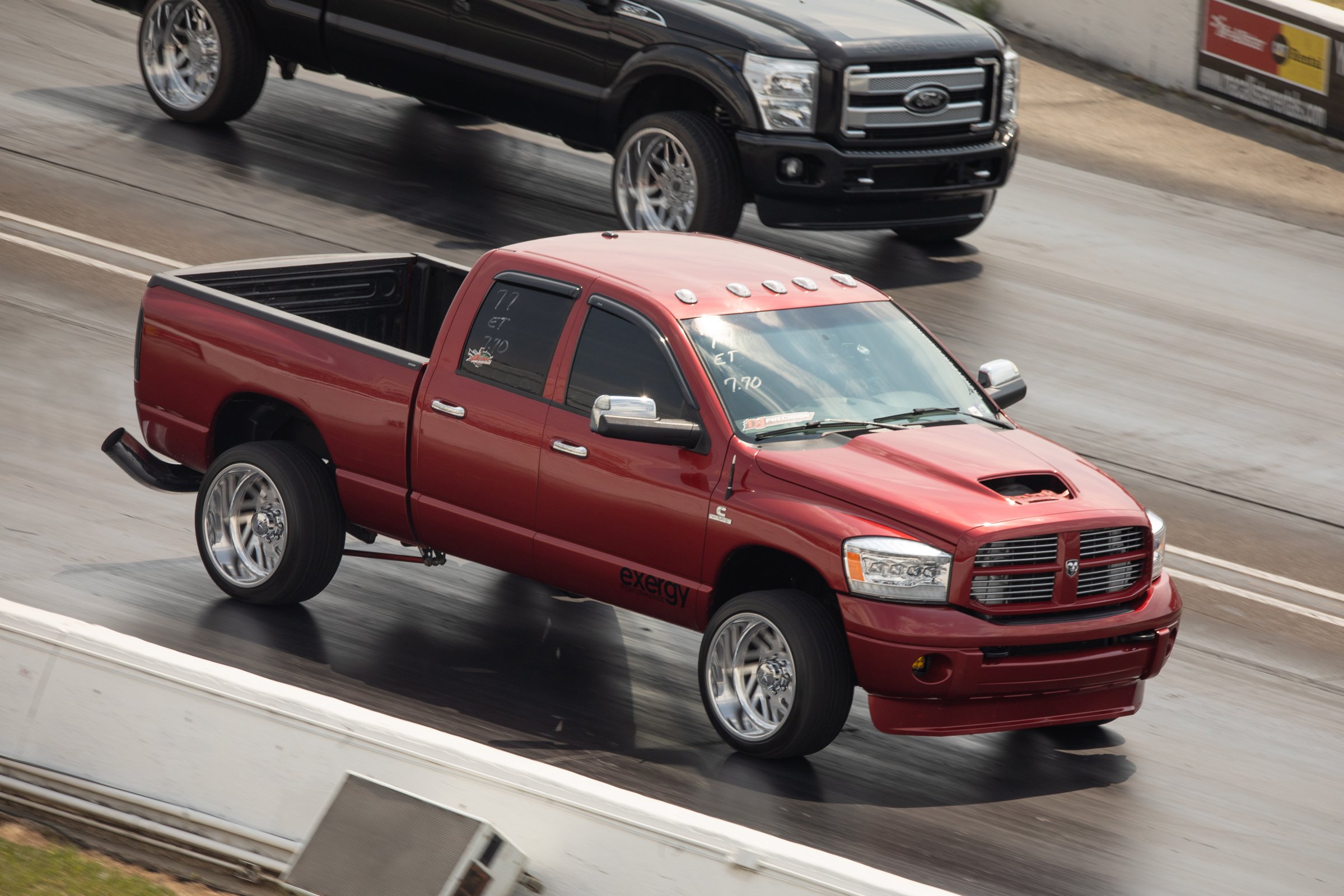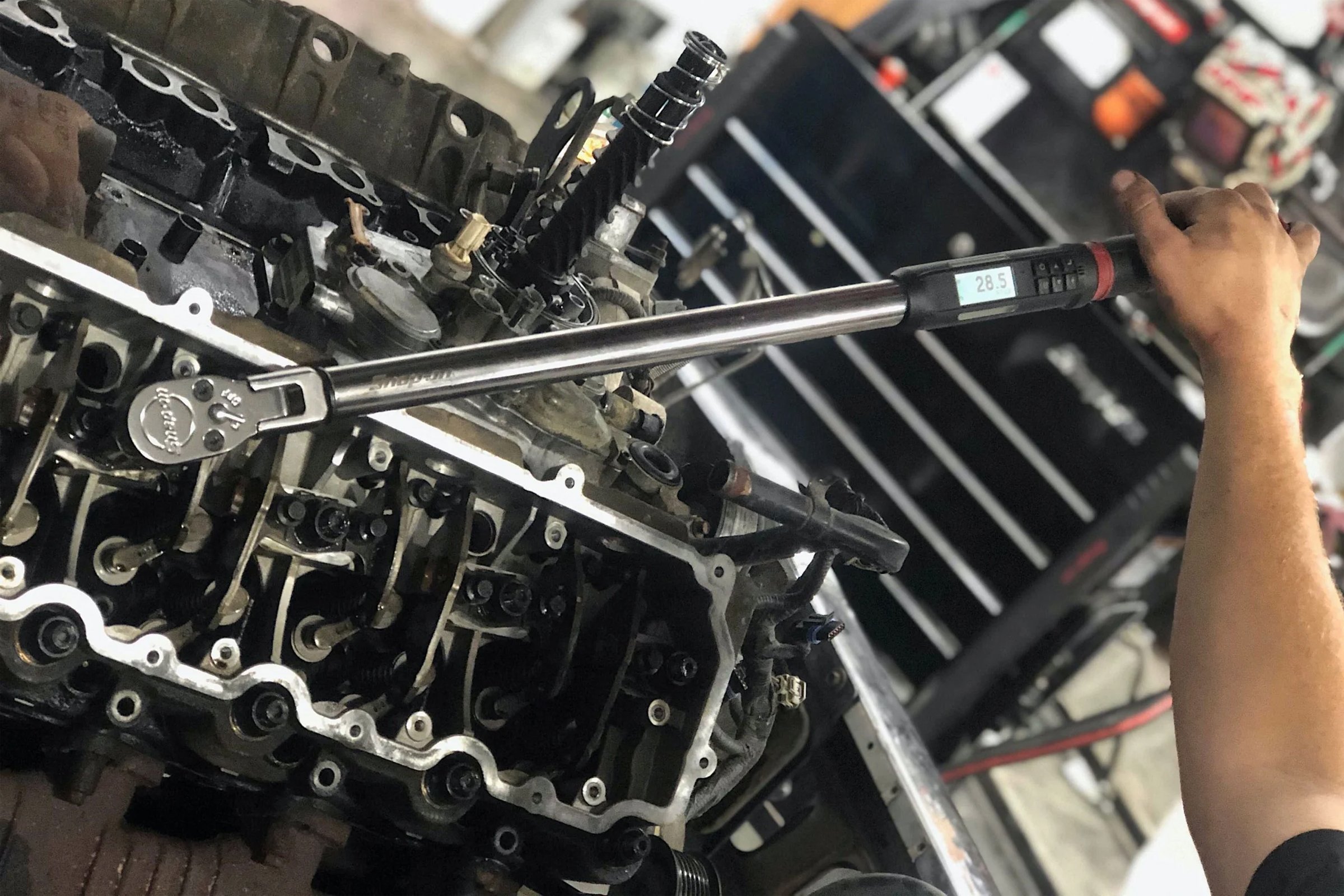As you may know, our tow rig, Project TowBoat, has been all around the country throughout the 2018 racing season. We have been following most of the Outlaw Diesel Super Series this year and with that, we needed a reliable mode of transportation. While the truck has functioned decently and gotten the job done, we’ve noticed a few things that needed to be addressed before the upcoming 2019 racing season. Thanks to our friends over at BD Diesel, today is the day of tackling the issues.
First off, the turbocharger that is on the truck is a larger 66-millimeter unit. We’ve been running this turbo since day one and it has performed flawlessly. But, with factory fueling and only an H & S Performance tuner, it seemed lousy when towing our race truck and trailer behind it. We were in need of something that drives as if we’re constantly in the power band.
Another thing I’ve noticed is that our truck still has the factory thermostat that’s designed to pop on and off and above 200 degrees Fahrenheit. While some of you may like that, I just don’t. Whenever the truck is cruising around, loaded or unloaded, it doesn’t matter; it runs hot. So for starters, the thermostat needs to be replaced with the lower 180-degree thermostat.
So, where do we go from here? Well, we turned to one of the greatest companies to work with when upgrading your diesel truck: BD Diesel Performance. BD Diesel offers an unbelievable amount of parts for multiple different diesel engine platforms. Luckily for us, they know just what we need for our tow rig – the BD Screamer turbo kit.
There are a number of turbo upgrades on the market for the 6.7-liter Cummins trucks. However, the majority of the upgrades require you to eliminate the VGT unit for a non-VGT unit. When you do that, you’re sacrificing your factory exhaust manifold, your built-in exhaust brake, and other parts that must be replaced when doing a swap like that.
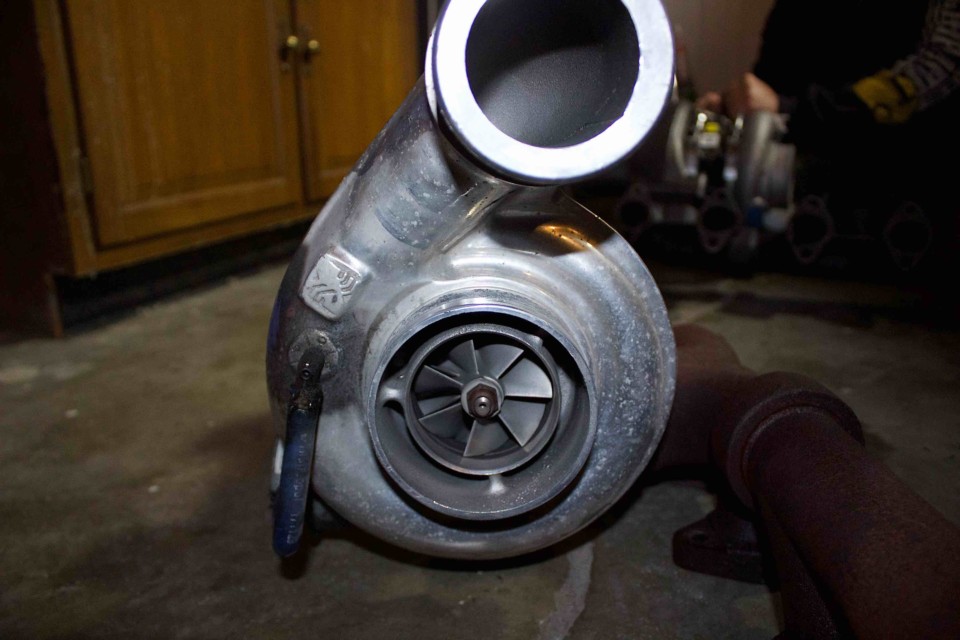
If you’re like most people, you just want a proven, reliable turbo that can replace your factory turbo and get a huge boost in performance.
With the original 66mm turbocharger, it went away with the factory exhaust brake and the variable geometry design. The screamer is a modified version of the factory HE351VE turbocharger that comes on these 6.7-liter Cummins engines. So, since we’re looking to downsize to get the low-end power back, this turbo is going to fit perfectly with our goals.
What Are The Details?
So, what’s so great about this turbocharger? Well, since we’re basically going back to a stock-appearing turbo, the screamer drops into the stock location just like that factory unit. We haven’t filled any usable room and the turbo still plugs and plays just like the original HE351VE.
On the inside, the screamer features a 64.5-mm 7+7 blade compressor wheel and a 70-mm 12-blade turbine wheel. With this configuration, BD has put this unit through grueling testing and has proven that this factory-appearing unit is capable of up to 690 horsepower. Not only does this turbocharger fit our needs, but if you’re into sled pulling that requires a stock or stock-appearing turbo, 690 horsepower will certainly put you in the front of the pack.
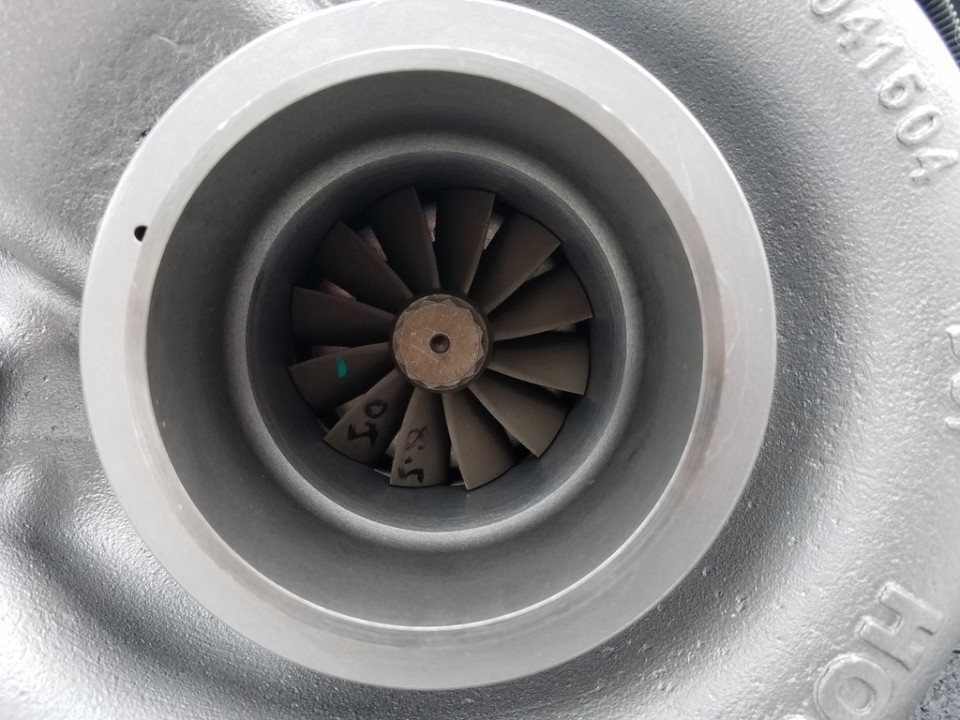
Like all of the BD Diesel turbochargers, the screamer is VSR high-speed balanced and tested before shipment. All VGT units are also equipped with a freshly tested actuator. What’s more, the cast elbows on these chargers have an alignment dowel to ensure correct placement on the downpipe of the exhaust. In this picture, you can see the holes for the dowel for when making final adjustments.
The Replacement
With an optimistic attitude, we dove right in. The first step to replacing the turbo is draining the coolant. The mistake I made was thinking I could do this without draining the coolant and just unplugging the hoses that are in the way and plugging them off. Well, long story short, the coolant needs to be drained.
With the coolant drained, you can remove the transfer line that is used to circulate coolant from the engine to and from the radiator. You don’t have to remove it, but after installing this turbo without it, I should have. So, with the coolant drained and oil feed and drains removed, you’re ready to start removing the hard parts.
Getting anxious about getting this new turbo on, we dove farther into it by removing the v-band clamp from the turbo’s cast elbow, separating it from the downpipe. With the turbo and manifold completely loose from the exhaust, it was time to pull the whole unit out. Now, as you know, the existing turbo was aftermarket, as was the exhaust manifold.
The exhaust manifold contained allen bolts to secure it to the cylinder head. With that being said, be careful pulling the mounting bolts out as they could strip (and I think we all know how disastrous that is going to be). Luckily for us, the bolts were anti-seized, so they came out of the cylinder head smoothly.
With a few pulls, yanks, and tugs, the old system came out, offering plenty of room for the newfound boost-making machine. Something to keep in mind – when you’re replacing a turbo and manifold on your truck, it is important to clean the surface of the cylinder head prior to installation to ensure your exhaust gaskets seal correctly. You don’t want to find a leak post-install and have to remove everything to fix it.
Knowing how much of a struggle it is to mount a turbo to an already mounted manifold, we went ahead and installed the turbo to the manifold. By applying anti-seize to all of the supplied hardware, the turbo was secure on the manifold and ready for its new home. After some twists, turns, and some more finagling, the new system was nearing its final resting place.
The final step, minus the hooking up of the oil feed and drain lines, is pretty self-explanatory. The only struggle you may encounter it lining the exhaust gaskets, the bolts, and the holes up simultaneously. The new turbo and manifold were in place and we were ready for a test drive.
First Impressions
After multiple check-overs on all the fluid connections and re-tightening mounting bolts and clamps, the truck was fired. Immediately, on the cold Missouri afternoon, the truck went into high-idle and that beloved ear-piercing VGT came to life. That sound may not be for your neighbors, but the sound of that fighter jet in your garage is very appealing.
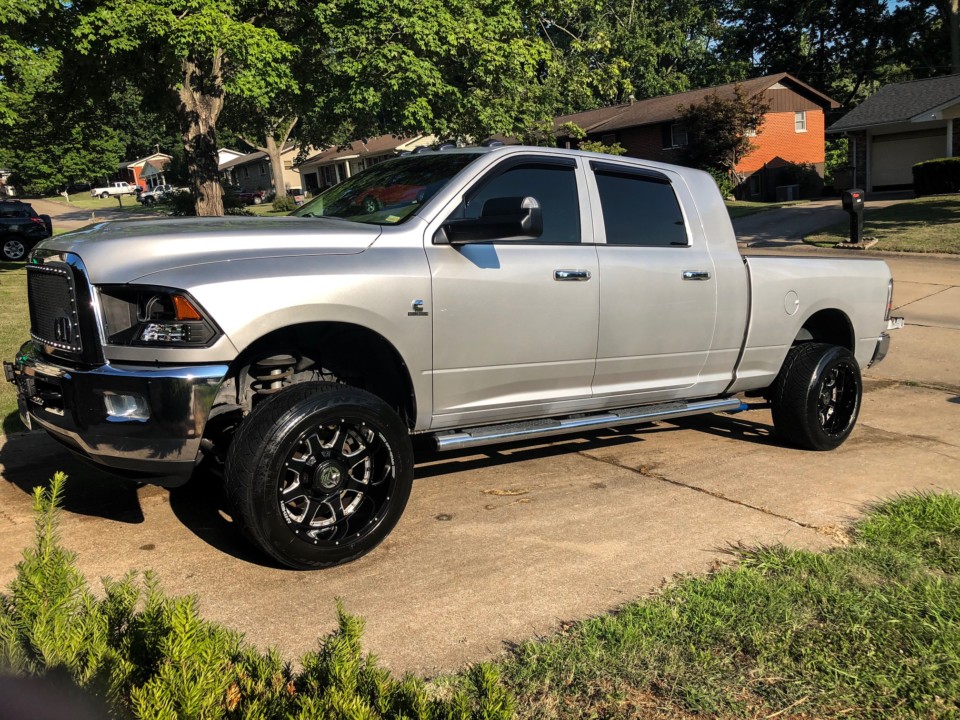
Testing the exhaust brake on and off and hearing the sounds this new turbo makes had us ready for a spin.
After driving the truck for nearly 30 minutes, we knew in the first 10 seconds of movement that we were in love. This turbo, as it should, is instantaneous power and it is ready for any job we throw at it. The guys at BD have really given the HE351 turbo a new outlook on life after their modifications, because this truck pulls hard.
On a closed course in Mexico, the truck reached over 35 psi of boost and barely 800 degrees of exhaust gas temperatures. Before, with the larger turbo, it wouldn’t take anything to cruise around at that temperature and reach 1,200 degrees or more while towing. We cannot wait to get our drag truck on the trailer behind this tow rig and put it to the test. If our towing experience is anything like the daily driving, this turbo will get an A+ from the Diesel Army team.
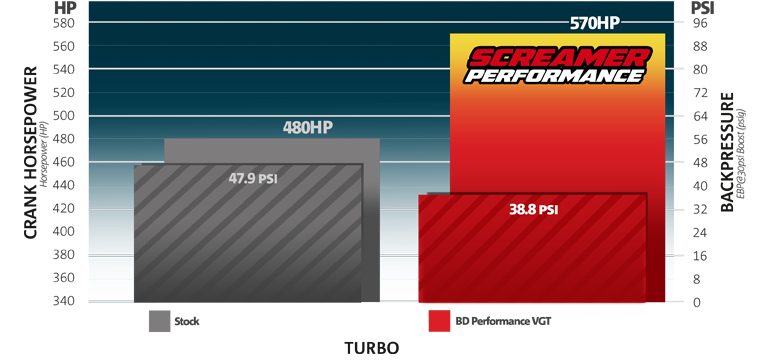
As you can see, the modifications that BD makes to these HE351 turbos are efficient ones. On this graph, you’ll see the stock turbo is capable of producing 480 horsepower at 47.9 psi. With the Screamer, you’re capable of 570 horsepower at only 38.8 psi. Turns out, that’s almost exactly what the truck made for boost pressure.
We are absolutely stunned at how awesome this truck drives with this new turbocharger. The thing has a power band like no other and it is ready to race, pull, tow, or just drive at any time with a ton of power. We can’t thank BD Diesel Performance enough for being involved with this build, and we look forward to many more projects with them.
Stay tuned as we may configure another turbocharger and set Project TowBoat up with a healthy size set of compound turbos for the ultimate towing setup. For more information about BD Diesel and what they can do for your diesel truck, be sure to check out their website.

